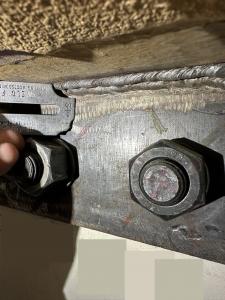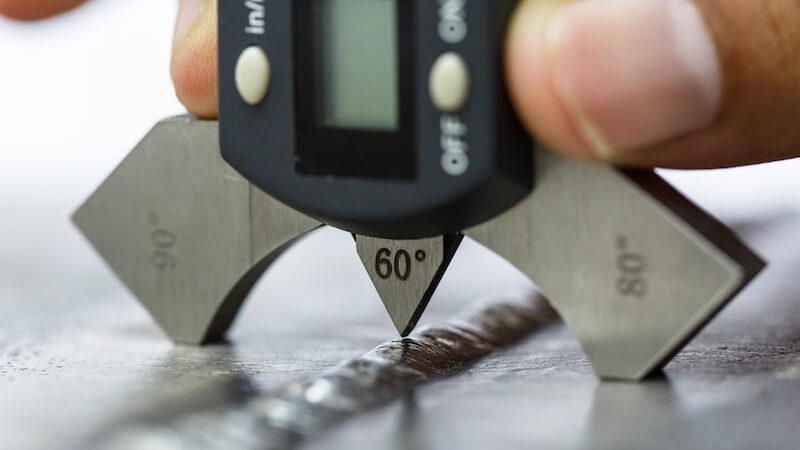A Comprehensive Overview to Welding Assessment: Recognizing Standards, Techniques, and Best Practices for Quality Control
Welding inspection plays a pivotal function in ensuring the architectural integrity and security of welded elements, necessitating a comprehensive understanding of sector standards such as those developed by AWS and ASME. As we explore these important elements, it becomes evident that the ramifications of welding inspection prolong much past compliance, inviting a better examination of exactly how these procedures shape market criteria and practices.
Importance of Welding Examination
Welding evaluation plays a critical role in guaranteeing the honesty and safety and security of welded frameworks. It is a vital procedure that validates that welds adhere to predefined specs, which is essential in numerous sectors, consisting of building and construction, auto, and aerospace. By conducting extensive assessments, possible defects such as fractures, insufficient fusion, and porosity can be identified early, avoiding devastating failings that could bring about accidents or expensive repairs.
The relevance of welding inspection expands past plain compliance with guidelines; it likewise fosters trust with stakeholders. Clients and regulatory bodies expect assurance that the structures they rely upon are developed to hold up against functional stresses. Furthermore, effective welding examination techniques add to long-lasting toughness and efficiency of the structures, inevitably causing minimized maintenance costs.
Additionally, welding inspection advertises a culture of quality within companies, encouraging adherence to best methods and constant improvement. By incorporating assessment processes right into the welding workflow, firms can enhance their credibility and develop themselves as leaders in high quality assurance. To conclude, the importance of welding inspection lies in its ability to guard lives, guarantee architectural dependability, and promote market criteria, making it a vital facet of welding operations.
Secret Sector Criteria
Making certain compliance with vital industry standards is crucial for keeping the quality and safety and security of welded structures. Different organizations develop these standards to promote finest techniques in welding and evaluation - Welding Inspection Gilbert Arizona. Amongst the most recognized are the American Welding Society (AWS) and the American Culture of Mechanical Designers (ASME), which provide in-depth standards and specifications for welding procedures and examination criteria
AWS standards, such as AWS D1.1 for structural welding, synopsis requirements for materials, design, and screening to ensure the integrity of welds. Likewise, ASME codes, consisting of ASME Area IX, control the credentials of welders and welding procedures, guaranteeing constant high quality in commercial applications. Worldwide, the ISO 3834 basic emphasizes quality requirements for fusion welding, giving a framework for organizations to demonstrate compliance with global best practices.
Conformity with these requirements not only improves the dependability of welded frameworks but likewise alleviates threats linked with structural failures. Adherence to industry criteria is commonly a prerequisite for regulatory authorizations and can dramatically affect project requirements. Inevitably, understanding and executing these essential criteria are necessary for efficient welding inspection and top quality guarantee.
Evaluation Techniques Overview
Reliable welding inspection counts on a selection of methods designed to analyze the high quality and honesty of welds. These methods can be broadly categorized right into non-destructive and devastating testing (NDT) approaches. Non-destructive testing strategies, which are widely favored in the market, permit for the assessment of welds without jeopardizing the integrity of the material.

Amongst the most commonly used NDT techniques are aesthetic inspection, ultrasonic testing, radiographic testing, and magnetic particle testing. Visual inspection is frequently the initial step in the evaluation process, enabling inspectors to identify surface area blemishes and examine weld grain accounts.
Each method has its very own advantages and restrictions, making it vital for examiners to pick the most appropriate approach based upon the certain demands of the job, the materials involved, and the criticality of the welds being inspected. This mindful option makes certain thorough evaluations and supports safety and security and high quality requirements in welding operations.
Usual Flaws and Their Implications
A thorough understanding of usual problems in welds is essential for keeping structural honesty and safety and security in welded constructions. Welding flaws can substantially endanger the mechanical residential or commercial properties of the joint, causing failures that might threaten both personnel and devices.
Usual issues consist of porosity, which materializes as small gas pockets entraped in the weld metal, compromising the overall structure. Splitting is one more widespread concern, typically arising from rapid air conditioning or improper joint layout, causing stress and anxiety concentrations that can cause catastrophic failings. Incomplete combination happens when the weld metal falls short to properly bond with the base product, developing powerlessness that may cause separation under load.
Other noteworthy issues include damaging, where the weld grain deteriorates the base steel, and slag incorporations, which can hinder the weld's stamina. Each of these problems has details implications; as an example, porosity can decrease ductility, while cracking directly affects tensile stamina. Identifying and understanding these problems throughout inspection is vital for carrying out corrective actions and guaranteeing conformity with industry criteria, ultimately guarding the architectural stability of bonded settings up.
Finest Practices for Quality Control
Carrying out best practices for quality assurance in read more welding procedures is important for attaining ideal outcomes and minimizing problems. One important technique is the facility of clear welding procedures that comply with market requirements and specifications. These procedures ought to consist of detailed guidelines pertaining to product selection, joint preparation, and welding techniques to guarantee consistency and top quality.
Regular training and qualification of welding personnel are additionally essential. Competent welders who understand the significance of top quality assurance are more probable to produce sound welds. In addition, applying a durable assessment program, including both non-destructive and visual screening (NDT), can aid identify defects early in the process, permitting timely corrective actions.

Finally, promoting a society of top quality within the company motivates staff members to prioritize high quality in their job. By adhering to these best methods, companies can enhance the honesty of their welding procedures, eventually causing enhanced product quality and decreased costs connected with rework and repairs.

Final Thought
In verdict, welding evaluation plays a crucial function in ensuring the honesty and safety and security of welded frameworks. By carrying out best practices, organizations can boost reliability, decrease upkeep prices, and cultivate count on amongst customers, eventually adding to effective welding procedures.
Additionally, welding evaluation advertises a society of high quality within organizations, motivating adherence to ideal practices and continual improvement. In final thought, the importance of welding evaluation exists in its capacity to protect lives, make certain architectural integrity, and copyright sector requirements, making it an important element of welding procedures.
Amongst the most recognized are the American Welding Culture (AWS) and the American Society of Mechanical Engineers (ASME), which provide comprehensive guidelines and specs for welding processes and assessment criteria.
Ultimately, understanding and executing these vital standards are crucial for efficient welding evaluation and high quality assurance.
Reliable welding assessment relies on a selection of methods designed to evaluate the top quality and integrity click here to read of welds.